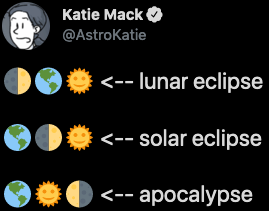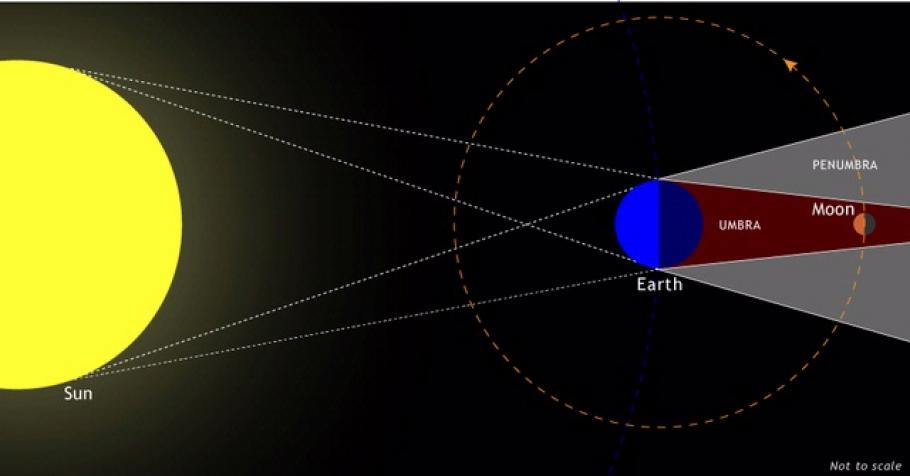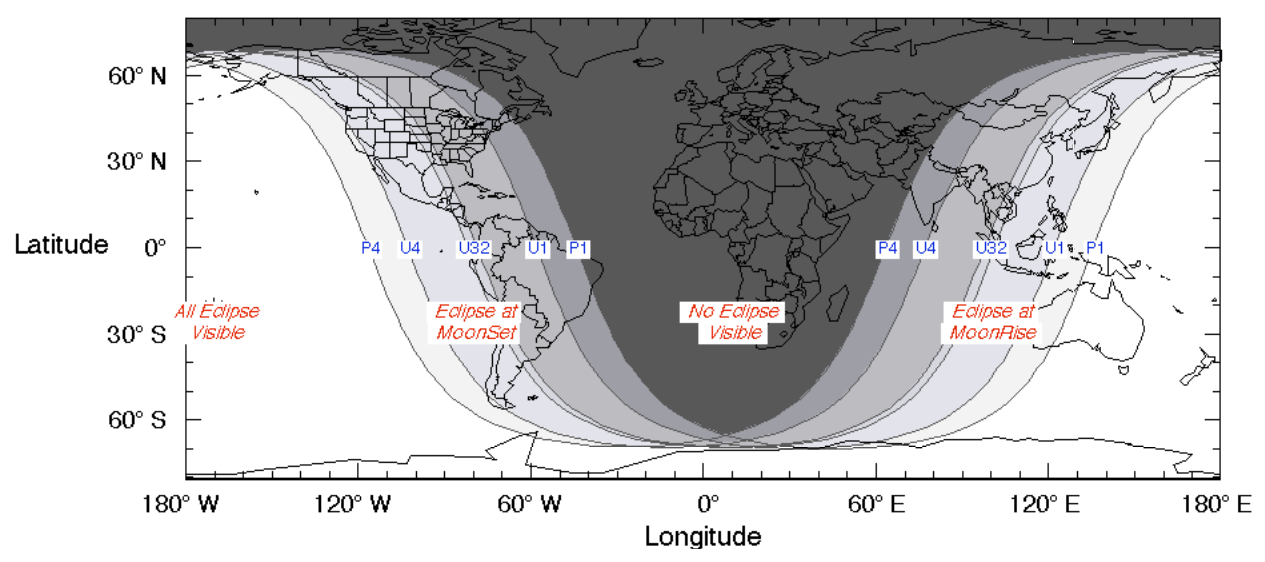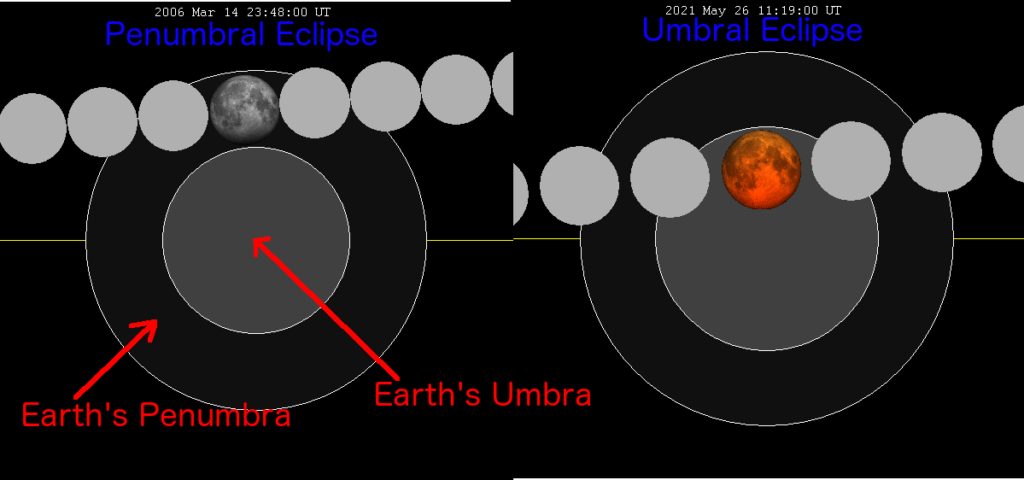
On May 26, most of the Americas and eastern Asia will be treated to a total lunar eclipse. While lunar eclipses are perhaps less spectacular than solar eclipses, they are more common and much easier to view.
I thought it might be helpful to provide a short primer on lunar eclipses in general and how, when, and where to view this one in particular for the Boise metro area. Most of what I say here will be relevant for other regions as well.
Eclipses 101

In general, eclipses occur when one celestial body passes through the shadow of another celestial body. If the Earth passes through the Moon’s shadow, we call that a solar eclipse. If the Moon passes through the Earth’s shadow, we call it a lunar eclipse.
Since the Moon is much smaller than the Earth, it has a much smaller shadow. Consequently, solar eclipses are rarer than lunar eclipses, and when they do happen, the Moon’s shadow is only visible across a narrow path of totality on the Earth’s surface.
By contrast, a lunar eclipse can be seen anywhere on Earth where the Moon is up and visible during the eclipse.
The Shadow Knows

The Moon’s precise appearance during eclipse depends on which part of the Earth’s shadow it passes through. If the Sun were a teeny, tiny point of light, then all parts of the Earth’s shadow would be the same, and all lunar eclipses would be “umbral” — the name for the darkest kind of eclipse.
But the Sun is not a tiny point of light, and so the Moon can pass through the Earth’s “penumbral” (meaning “almost shadow”) shadow. The diagram above shows the difference in geometry and the one below shows the difference in appearance: in the penumbra, the Earth blocks out some but not all of the Sun as seen from the surface of the Moon. In the umbra, the Sun would be completely blocked out.
Although the Sun is completely blocked out as seen from the Moon during an umbral eclipse, the Moon is not completely dark. Instead, it takes on a dark, ruddy color, sometimes called a “blood Moon“. Why?
For the same reason that sunsets on Earth are red. Sunlight that passes through the Earth’s atmosphere gets bounced around by the gas molecules (an effect called “Rayleigh scattering“). Blue light is more easily scattered than red light, so that when you look at sunset, the blue light has been bounced away from the image of the Sun, while the red light travels in a mostly straight line.
Thus, the red light from the Sun passes almost unimpeded through the atmosphere, coloring the Moon red during an eclipse.
May Eclipses Bring June Road Tripses

The umbral eclipse on May 26 will start at about 2:47am here in Boise and end at about 6:18am.
The map above shows what phase the eclipse will be in just as the Moon is setting (and therefore becomes invisible):
- “P1” – This phase marks the beginning of the eclipse (2:47am MT) and is when the Moon just enters Earth’s penumbral shadow.
- “U1” – The Moon begins to enter the umbral shadow at about 3:44am MT.
- “U32” – The darkest part of the eclipse, which will last about 15 minutes, at about 5:11am MT.
- “U4” and “P4” – The inverse of U1 and P1.
According to the above map, the Moon will just be setting during the very last phases of the eclipse as seen from Boise. Fortunately, the weather forecast (as of May 22) is for clear skies that morning in Boise, so you should be able to see it from here, assuming you are a night owl or early bird. Anywhere you have a clear sky and a view of the Moon will be a good place to watch the eclipse, but the Central Idaho Dark Sky Reserve might be an especially good place.
Every Saros’ Lifespan
Although eclipses occur regularly (every 5 months or so) and succeeding eclipses can be different, each eclipse falls into a chain of sibling eclipses that recur every 18 years for more than a thousand years, called a “Saros cycle“. The May 26 eclipse is part of Saros cycle 121, which began in 1047 and will end in 2508, a chain almost 1500 years long.
Though the 1047 lunar eclipse was the first in this Saros cycle, it would have been the last one General Leo Tornikios could have seen: having been driven from Constantinople after a very short emperorship, he was captured in Turkey that winter and publicly blinded.
The most recent eclipse in this cycle, on May 16, 2003, was perhaps less eventful but no less Turkish: that month, Sertab Erener won the Eurovision song contest with her catchy song “Everyway That I Can“.
